Ecuador · Featured · Regions · South America
The best times to visit the 4 amazing worlds of Ecuador
So, just when is the best time to travel to Ecuador? Ask any tour operator in the country, and they’ll tell you that there’s NEVER a bad time to experience this South American nation.
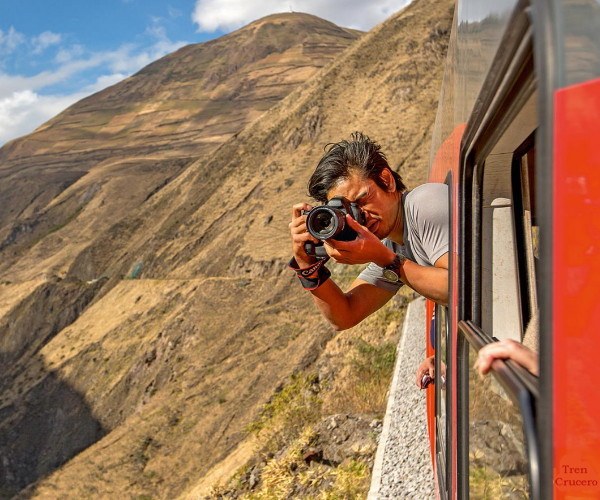 Still, for those looking to visit our country at “ideal” times — when there’s the least rain, the most days of sunlight, the most comfortable temperature, etc. — we’ve identified those travel windows just for you.
Remember, though, traveling to Ecuador and its distinct and varied regions is almost like journeying to four different countries. So what are these areas?:
Still, for those looking to visit our country at “ideal” times — when there’s the least rain, the most days of sunlight, the most comfortable temperature, etc. — we’ve identified those travel windows just for you.
Remember, though, traveling to Ecuador and its distinct and varied regions is almost like journeying to four different countries. So what are these areas?:
 1. The Andean Highlands: a colorful patchwork of rolling fields at the feet of majestic mountains with stormy grey clouds simmering up from the jungle beyond.
2. The Galapagos Islands: A Jurassic world of ancient volcanoes and indisputable evidence of the evolution of life on earth
3. Ecuador’s Amazonian rainforest, a virtual Garden of Eden, which — inch for inch — is the most bio-diverse country on the planet!
4. The Pacific Coast: 1,400 miles of shimmering shores, pristine beaches, vibrant surfing towns, tepid seawater, and exotic wildlife.
Here, we identify the very best times for experiencing each of these inviting regions.
1. The Andean Highlands (“La Sierra”)
Best time to go: ideal between June and August
Many of Ecuador’s larger cities, including the capital city of Quito, are found in the Andean highlands (“La Sierra”). Here temperatures are typically cool. Quito boasts a near constant annual temperature, with average highs in the upper-60s° F and lows in the upper 40s° F (19.6° C to 9.3° C). We suggest visiting Ecuador during the June-August dry season, which is also somewhat warmer. Outside these months, typical Sierra weather offers sunny, clear mornings and cloudy, often wet afternoons.
1. The Andean Highlands: a colorful patchwork of rolling fields at the feet of majestic mountains with stormy grey clouds simmering up from the jungle beyond.
2. The Galapagos Islands: A Jurassic world of ancient volcanoes and indisputable evidence of the evolution of life on earth
3. Ecuador’s Amazonian rainforest, a virtual Garden of Eden, which — inch for inch — is the most bio-diverse country on the planet!
4. The Pacific Coast: 1,400 miles of shimmering shores, pristine beaches, vibrant surfing towns, tepid seawater, and exotic wildlife.
Here, we identify the very best times for experiencing each of these inviting regions.
1. The Andean Highlands (“La Sierra”)
Best time to go: ideal between June and August
Many of Ecuador’s larger cities, including the capital city of Quito, are found in the Andean highlands (“La Sierra”). Here temperatures are typically cool. Quito boasts a near constant annual temperature, with average highs in the upper-60s° F and lows in the upper 40s° F (19.6° C to 9.3° C). We suggest visiting Ecuador during the June-August dry season, which is also somewhat warmer. Outside these months, typical Sierra weather offers sunny, clear mornings and cloudy, often wet afternoons.
 This constantly spring-like weather makes the highlands great for adventure seekers. Hiking, white-water rafting, mountain biking, mountain climbing, zip lining, trekking, horseback riding, bird watching and countless other activities await. At the same time, conditions of optimal for wandering through the character-filled highland cities of Quito and Cuenca, which are dominated by cobblestoned streets, colonial courtyards and glowing cupolas – remnants of the colonial era that sympathetically coexist with vibrant, modern city life.
2. The Galapagos Islands
Best time to go: Stay cooler between May and November
Probably the most famous wildlife-watching destination in the world, the Galapagos Islands are near the top of most experienced travelers’ “bucket-lists.’” During the months of May to November, this Pacific archipelago experiences weather characterized by a cool garúa (mist), with temperatures averaging 76°F/24°C. The rest of the year — from January to June — the islands are typically hot, averaging 85°F/30°C, and interspersed with the odd heavy shower.
This constantly spring-like weather makes the highlands great for adventure seekers. Hiking, white-water rafting, mountain biking, mountain climbing, zip lining, trekking, horseback riding, bird watching and countless other activities await. At the same time, conditions of optimal for wandering through the character-filled highland cities of Quito and Cuenca, which are dominated by cobblestoned streets, colonial courtyards and glowing cupolas – remnants of the colonial era that sympathetically coexist with vibrant, modern city life.
2. The Galapagos Islands
Best time to go: Stay cooler between May and November
Probably the most famous wildlife-watching destination in the world, the Galapagos Islands are near the top of most experienced travelers’ “bucket-lists.’” During the months of May to November, this Pacific archipelago experiences weather characterized by a cool garúa (mist), with temperatures averaging 76°F/24°C. The rest of the year — from January to June — the islands are typically hot, averaging 85°F/30°C, and interspersed with the odd heavy shower.
 Those travelers who are lucky or wise enough to go visit this open-air wildlife museum any time of the year will find themselves splashing in the waves. Revel in the chance to play tag with precocious puppy-like sea lions, or snorkel through air-sculpted lava tunnels with sea turtles and penguins. An otherworldly sort of place, these islands are quite literally bursting with life and waiting to be explored.
This archipelago also provides travelers the opportunity to observe — without the aid of binoculars — the inimitable and often unusual characteristics and behavior of island bird, reptile, mammal and fish species found nowhere else in the world. While enjoying this abundance of wildlife at every turn, the cooler May-to-November period is especially great for exploring the islands’ stark lava formations, cactus forests, imposing towers of solid rock, turquoise bays and vast expanses of white, red and green sand.
3. The Ecuadorian Amazon (“El Oriente”)
Best time to go: June to November (low-water season)
The Ecuadorian Amazon is a rainforest, making it no surprise that it receives about 200 days of precipitation per year, while its temperature is a warm 73-82°F (23-28°C).
Those travelers who are lucky or wise enough to go visit this open-air wildlife museum any time of the year will find themselves splashing in the waves. Revel in the chance to play tag with precocious puppy-like sea lions, or snorkel through air-sculpted lava tunnels with sea turtles and penguins. An otherworldly sort of place, these islands are quite literally bursting with life and waiting to be explored.
This archipelago also provides travelers the opportunity to observe — without the aid of binoculars — the inimitable and often unusual characteristics and behavior of island bird, reptile, mammal and fish species found nowhere else in the world. While enjoying this abundance of wildlife at every turn, the cooler May-to-November period is especially great for exploring the islands’ stark lava formations, cactus forests, imposing towers of solid rock, turquoise bays and vast expanses of white, red and green sand.
3. The Ecuadorian Amazon (“El Oriente”)
Best time to go: June to November (low-water season)
The Ecuadorian Amazon is a rainforest, making it no surprise that it receives about 200 days of precipitation per year, while its temperature is a warm 73-82°F (23-28°C).
 In the tropical rainforest, it’s best to be prepared for all kinds of weather. A common question posed by travelers is about the Amazon’s “dry and rainy seasons.” However, since rainfall is so common, it might be better to describe these as the “low water” and “high water” seasons.
During the low-water season (roughly June to November), there are fewer daily showers, but the rivers are lower and some are not navigable; instead, hiking trails allow explorers to gain access to deeper parts of the jungle on foot. As there are also fewer mosquitoes and much of the wildlife can be more easily spotted congregated to the remaining wet spots, this dryer season is generally considered the best time of the year to visit the Amazon basin.
The opposite conditions are true during the high-water season (December to May), when rivers can rise up to 23 feet (7m) in parts of the Amazon Basin This makes all of the rivers and creeks accessible and navigable, though some of the jungle trails are flooded.
4. The Pacific Coast (“La Costa”)
Best time to go: Between May and December
The shore running 1,400 miles to define Ecuador’s western edge, Ecuador’s Pacific coast offers pristine beaches, vibrant surfing towns, tepid seawater, exotic wildlife on islands just offshore, prehistoric art and archeological sites, and a supremely bio-diverse abundance of flora and fauna.
In the tropical rainforest, it’s best to be prepared for all kinds of weather. A common question posed by travelers is about the Amazon’s “dry and rainy seasons.” However, since rainfall is so common, it might be better to describe these as the “low water” and “high water” seasons.
During the low-water season (roughly June to November), there are fewer daily showers, but the rivers are lower and some are not navigable; instead, hiking trails allow explorers to gain access to deeper parts of the jungle on foot. As there are also fewer mosquitoes and much of the wildlife can be more easily spotted congregated to the remaining wet spots, this dryer season is generally considered the best time of the year to visit the Amazon basin.
The opposite conditions are true during the high-water season (December to May), when rivers can rise up to 23 feet (7m) in parts of the Amazon Basin This makes all of the rivers and creeks accessible and navigable, though some of the jungle trails are flooded.
4. The Pacific Coast (“La Costa”)
Best time to go: Between May and December
The shore running 1,400 miles to define Ecuador’s western edge, Ecuador’s Pacific coast offers pristine beaches, vibrant surfing towns, tepid seawater, exotic wildlife on islands just offshore, prehistoric art and archeological sites, and a supremely bio-diverse abundance of flora and fauna.
 As far as the weather goes, things can get a little hot and humid in the coastal area of Ecuador! Here, the weather is about what you probably expect from the Ecuador climate: truly tropical with temperatures usually between 80 and 90 degrees F (25-31°C).
The coast has clearly defined wet and dry seasons, with the best time to visit being the May to November dry season. There is a rainy season in this region, which occurs between December and April, when you can expect torrential downpours to disrupt your day.
For those people willing to “rough it” just a tad, you can still find seaside communities where canoes are pulled through the waves in the morning to unload the day’s catch, and settings where hammocks are hung between palm trees for afternoon naps in the sultry weather as life moves at a slower pace.
Alfonso Tandazo is President and CEO at Surtrek Tour Operator. Surtrek Tour Operator is a well-established firm, specializing in custom-designed luxury tours in Ecuador, the Galapagos and throughout the rest of South America.
If you would like to be a guest blogger on A Luxury Travel Blog in order to raise your profile, please contact us.
As far as the weather goes, things can get a little hot and humid in the coastal area of Ecuador! Here, the weather is about what you probably expect from the Ecuador climate: truly tropical with temperatures usually between 80 and 90 degrees F (25-31°C).
The coast has clearly defined wet and dry seasons, with the best time to visit being the May to November dry season. There is a rainy season in this region, which occurs between December and April, when you can expect torrential downpours to disrupt your day.
For those people willing to “rough it” just a tad, you can still find seaside communities where canoes are pulled through the waves in the morning to unload the day’s catch, and settings where hammocks are hung between palm trees for afternoon naps in the sultry weather as life moves at a slower pace.
Alfonso Tandazo is President and CEO at Surtrek Tour Operator. Surtrek Tour Operator is a well-established firm, specializing in custom-designed luxury tours in Ecuador, the Galapagos and throughout the rest of South America.
If you would like to be a guest blogger on A Luxury Travel Blog in order to raise your profile, please contact us.
 Still, for those looking to visit our country at “ideal” times — when there’s the least rain, the most days of sunlight, the most comfortable temperature, etc. — we’ve identified those travel windows just for you.
Remember, though, traveling to Ecuador and its distinct and varied regions is almost like journeying to four different countries. So what are these areas?:
Still, for those looking to visit our country at “ideal” times — when there’s the least rain, the most days of sunlight, the most comfortable temperature, etc. — we’ve identified those travel windows just for you.
Remember, though, traveling to Ecuador and its distinct and varied regions is almost like journeying to four different countries. So what are these areas?:
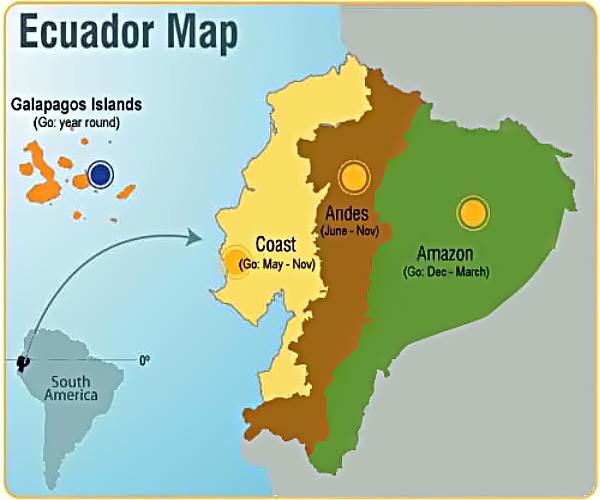 1. The Andean Highlands: a colorful patchwork of rolling fields at the feet of majestic mountains with stormy grey clouds simmering up from the jungle beyond.
2. The Galapagos Islands: A Jurassic world of ancient volcanoes and indisputable evidence of the evolution of life on earth
3. Ecuador’s Amazonian rainforest, a virtual Garden of Eden, which — inch for inch — is the most bio-diverse country on the planet!
4. The Pacific Coast: 1,400 miles of shimmering shores, pristine beaches, vibrant surfing towns, tepid seawater, and exotic wildlife.
Here, we identify the very best times for experiencing each of these inviting regions.
1. The Andean Highlands (“La Sierra”)
Best time to go: ideal between June and August
Many of Ecuador’s larger cities, including the capital city of Quito, are found in the Andean highlands (“La Sierra”). Here temperatures are typically cool. Quito boasts a near constant annual temperature, with average highs in the upper-60s° F and lows in the upper 40s° F (19.6° C to 9.3° C). We suggest visiting Ecuador during the June-August dry season, which is also somewhat warmer. Outside these months, typical Sierra weather offers sunny, clear mornings and cloudy, often wet afternoons.
1. The Andean Highlands: a colorful patchwork of rolling fields at the feet of majestic mountains with stormy grey clouds simmering up from the jungle beyond.
2. The Galapagos Islands: A Jurassic world of ancient volcanoes and indisputable evidence of the evolution of life on earth
3. Ecuador’s Amazonian rainforest, a virtual Garden of Eden, which — inch for inch — is the most bio-diverse country on the planet!
4. The Pacific Coast: 1,400 miles of shimmering shores, pristine beaches, vibrant surfing towns, tepid seawater, and exotic wildlife.
Here, we identify the very best times for experiencing each of these inviting regions.
1. The Andean Highlands (“La Sierra”)
Best time to go: ideal between June and August
Many of Ecuador’s larger cities, including the capital city of Quito, are found in the Andean highlands (“La Sierra”). Here temperatures are typically cool. Quito boasts a near constant annual temperature, with average highs in the upper-60s° F and lows in the upper 40s° F (19.6° C to 9.3° C). We suggest visiting Ecuador during the June-August dry season, which is also somewhat warmer. Outside these months, typical Sierra weather offers sunny, clear mornings and cloudy, often wet afternoons.
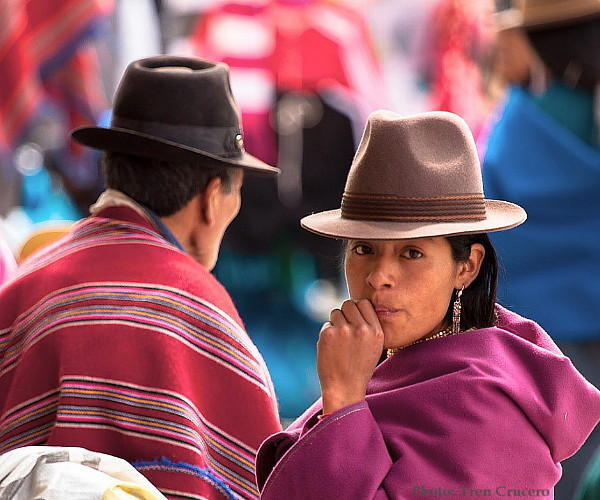 This constantly spring-like weather makes the highlands great for adventure seekers. Hiking, white-water rafting, mountain biking, mountain climbing, zip lining, trekking, horseback riding, bird watching and countless other activities await. At the same time, conditions of optimal for wandering through the character-filled highland cities of Quito and Cuenca, which are dominated by cobblestoned streets, colonial courtyards and glowing cupolas – remnants of the colonial era that sympathetically coexist with vibrant, modern city life.
2. The Galapagos Islands
Best time to go: Stay cooler between May and November
Probably the most famous wildlife-watching destination in the world, the Galapagos Islands are near the top of most experienced travelers’ “bucket-lists.’” During the months of May to November, this Pacific archipelago experiences weather characterized by a cool garúa (mist), with temperatures averaging 76°F/24°C. The rest of the year — from January to June — the islands are typically hot, averaging 85°F/30°C, and interspersed with the odd heavy shower.
This constantly spring-like weather makes the highlands great for adventure seekers. Hiking, white-water rafting, mountain biking, mountain climbing, zip lining, trekking, horseback riding, bird watching and countless other activities await. At the same time, conditions of optimal for wandering through the character-filled highland cities of Quito and Cuenca, which are dominated by cobblestoned streets, colonial courtyards and glowing cupolas – remnants of the colonial era that sympathetically coexist with vibrant, modern city life.
2. The Galapagos Islands
Best time to go: Stay cooler between May and November
Probably the most famous wildlife-watching destination in the world, the Galapagos Islands are near the top of most experienced travelers’ “bucket-lists.’” During the months of May to November, this Pacific archipelago experiences weather characterized by a cool garúa (mist), with temperatures averaging 76°F/24°C. The rest of the year — from January to June — the islands are typically hot, averaging 85°F/30°C, and interspersed with the odd heavy shower.
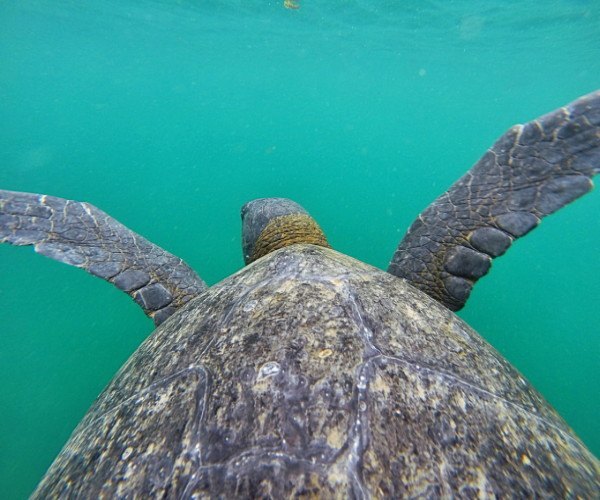 Those travelers who are lucky or wise enough to go visit this open-air wildlife museum any time of the year will find themselves splashing in the waves. Revel in the chance to play tag with precocious puppy-like sea lions, or snorkel through air-sculpted lava tunnels with sea turtles and penguins. An otherworldly sort of place, these islands are quite literally bursting with life and waiting to be explored.
This archipelago also provides travelers the opportunity to observe — without the aid of binoculars — the inimitable and often unusual characteristics and behavior of island bird, reptile, mammal and fish species found nowhere else in the world. While enjoying this abundance of wildlife at every turn, the cooler May-to-November period is especially great for exploring the islands’ stark lava formations, cactus forests, imposing towers of solid rock, turquoise bays and vast expanses of white, red and green sand.
3. The Ecuadorian Amazon (“El Oriente”)
Best time to go: June to November (low-water season)
The Ecuadorian Amazon is a rainforest, making it no surprise that it receives about 200 days of precipitation per year, while its temperature is a warm 73-82°F (23-28°C).
Those travelers who are lucky or wise enough to go visit this open-air wildlife museum any time of the year will find themselves splashing in the waves. Revel in the chance to play tag with precocious puppy-like sea lions, or snorkel through air-sculpted lava tunnels with sea turtles and penguins. An otherworldly sort of place, these islands are quite literally bursting with life and waiting to be explored.
This archipelago also provides travelers the opportunity to observe — without the aid of binoculars — the inimitable and often unusual characteristics and behavior of island bird, reptile, mammal and fish species found nowhere else in the world. While enjoying this abundance of wildlife at every turn, the cooler May-to-November period is especially great for exploring the islands’ stark lava formations, cactus forests, imposing towers of solid rock, turquoise bays and vast expanses of white, red and green sand.
3. The Ecuadorian Amazon (“El Oriente”)
Best time to go: June to November (low-water season)
The Ecuadorian Amazon is a rainforest, making it no surprise that it receives about 200 days of precipitation per year, while its temperature is a warm 73-82°F (23-28°C).
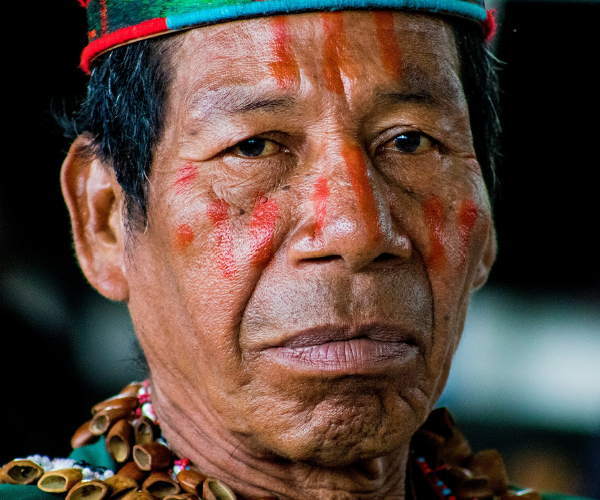 In the tropical rainforest, it’s best to be prepared for all kinds of weather. A common question posed by travelers is about the Amazon’s “dry and rainy seasons.” However, since rainfall is so common, it might be better to describe these as the “low water” and “high water” seasons.
During the low-water season (roughly June to November), there are fewer daily showers, but the rivers are lower and some are not navigable; instead, hiking trails allow explorers to gain access to deeper parts of the jungle on foot. As there are also fewer mosquitoes and much of the wildlife can be more easily spotted congregated to the remaining wet spots, this dryer season is generally considered the best time of the year to visit the Amazon basin.
The opposite conditions are true during the high-water season (December to May), when rivers can rise up to 23 feet (7m) in parts of the Amazon Basin This makes all of the rivers and creeks accessible and navigable, though some of the jungle trails are flooded.
4. The Pacific Coast (“La Costa”)
Best time to go: Between May and December
The shore running 1,400 miles to define Ecuador’s western edge, Ecuador’s Pacific coast offers pristine beaches, vibrant surfing towns, tepid seawater, exotic wildlife on islands just offshore, prehistoric art and archeological sites, and a supremely bio-diverse abundance of flora and fauna.
In the tropical rainforest, it’s best to be prepared for all kinds of weather. A common question posed by travelers is about the Amazon’s “dry and rainy seasons.” However, since rainfall is so common, it might be better to describe these as the “low water” and “high water” seasons.
During the low-water season (roughly June to November), there are fewer daily showers, but the rivers are lower and some are not navigable; instead, hiking trails allow explorers to gain access to deeper parts of the jungle on foot. As there are also fewer mosquitoes and much of the wildlife can be more easily spotted congregated to the remaining wet spots, this dryer season is generally considered the best time of the year to visit the Amazon basin.
The opposite conditions are true during the high-water season (December to May), when rivers can rise up to 23 feet (7m) in parts of the Amazon Basin This makes all of the rivers and creeks accessible and navigable, though some of the jungle trails are flooded.
4. The Pacific Coast (“La Costa”)
Best time to go: Between May and December
The shore running 1,400 miles to define Ecuador’s western edge, Ecuador’s Pacific coast offers pristine beaches, vibrant surfing towns, tepid seawater, exotic wildlife on islands just offshore, prehistoric art and archeological sites, and a supremely bio-diverse abundance of flora and fauna.
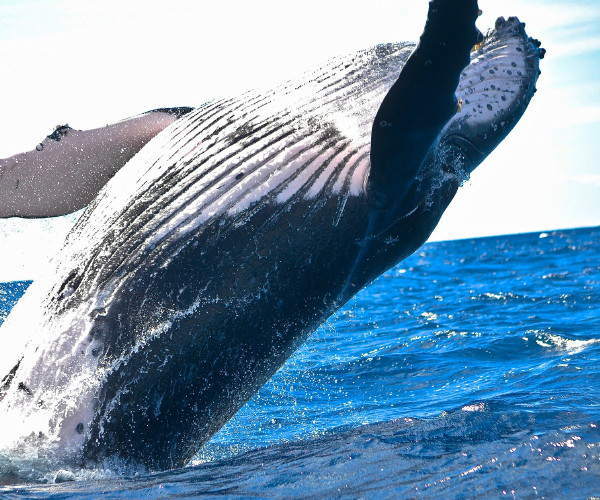 As far as the weather goes, things can get a little hot and humid in the coastal area of Ecuador! Here, the weather is about what you probably expect from the Ecuador climate: truly tropical with temperatures usually between 80 and 90 degrees F (25-31°C).
The coast has clearly defined wet and dry seasons, with the best time to visit being the May to November dry season. There is a rainy season in this region, which occurs between December and April, when you can expect torrential downpours to disrupt your day.
For those people willing to “rough it” just a tad, you can still find seaside communities where canoes are pulled through the waves in the morning to unload the day’s catch, and settings where hammocks are hung between palm trees for afternoon naps in the sultry weather as life moves at a slower pace.
Alfonso Tandazo is President and CEO at Surtrek Tour Operator. Surtrek Tour Operator is a well-established firm, specializing in custom-designed luxury tours in Ecuador, the Galapagos and throughout the rest of South America.
If you would like to be a guest blogger on A Luxury Travel Blog in order to raise your profile, please contact us.
As far as the weather goes, things can get a little hot and humid in the coastal area of Ecuador! Here, the weather is about what you probably expect from the Ecuador climate: truly tropical with temperatures usually between 80 and 90 degrees F (25-31°C).
The coast has clearly defined wet and dry seasons, with the best time to visit being the May to November dry season. There is a rainy season in this region, which occurs between December and April, when you can expect torrential downpours to disrupt your day.
For those people willing to “rough it” just a tad, you can still find seaside communities where canoes are pulled through the waves in the morning to unload the day’s catch, and settings where hammocks are hung between palm trees for afternoon naps in the sultry weather as life moves at a slower pace.
Alfonso Tandazo is President and CEO at Surtrek Tour Operator. Surtrek Tour Operator is a well-established firm, specializing in custom-designed luxury tours in Ecuador, the Galapagos and throughout the rest of South America.
If you would like to be a guest blogger on A Luxury Travel Blog in order to raise your profile, please contact us.Did you enjoy this article?
Receive similar content direct to your inbox.



I often use the Westherspark websites when planning a trip but the problem there is that I think most of the data comes from airport stats, no airport – no stats. These maps and insights are really helpful in giving advice on when and where to go as well as what to pack.
For a small country Ecuador has an amazing diversity of environments and that’s what creates such biodiversity too. What a great place to visit!
What an amazing photo portrait. The picture of the man from the indigenous population says so much. The paint on his face makes you want to know more about the world that he comes from. There’s such a look of pride on his face too. You just know that he will fight for his heritage, he will not give up his traditions easily. It’s a brilliant image that makes you want to read on.
The more I read A Luxury Travel Blog the more places I discover that I’ve got to visit. My Bucket List is getting longer by the day. After reading this Ecuador has zoomed into my top three.
I just live for travel, I’ve really got the travel bug. When I read posts like this it just gives me even more places that I want to visit. Though this sort of post does help me to make the most of my limited travel budget helping me to decide which are the best options.
I like the honesty of the language “low water” is very appropriate. Often in the past I’ve come across Travel industry professionals who have been very economical with the truth, dismissing the Indian monsoon season as “just a few showers.”
Hi, excellent guide. I will just separate the coast in 2 times. Inland coastal region it’s true that the best is the dry season as mentioned. But for the beaches, the best time is January – March which is considered “beach season”. Even though it’s the rainy season, it never rains near the ocean at this period and you have hot sunny weather. Great traveling !!